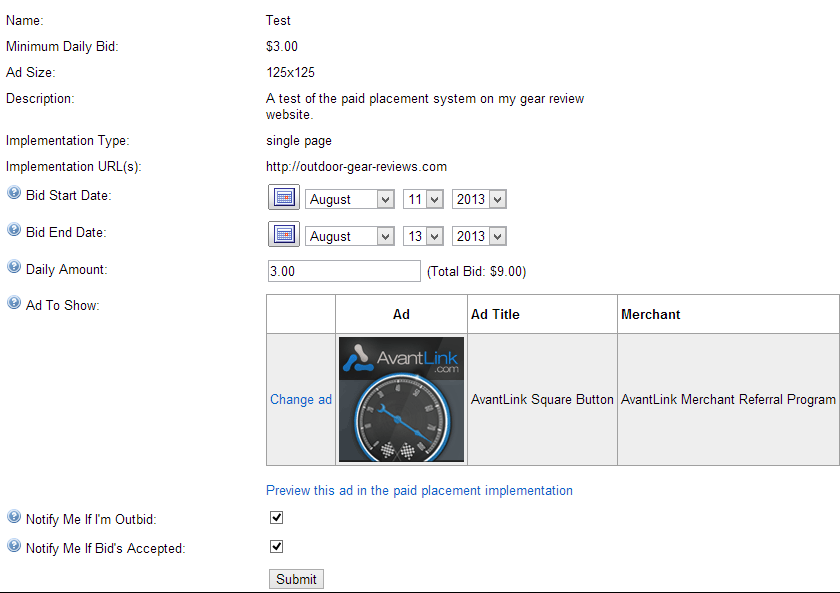With the fourth quarter here, affiliate managers should now focus on securing key placements on select sites. Traditionally, this means identifying placement opportunities and negotiating an increased revenue share to the affiliate in exchange for home page banner-ad placement. These placements can run during a specific time frame, or for all affiliate-driven holiday promotions.
Fixed Fee for the Home Page?
The challenge with this model is that many larger affiliate sites reserve home page placement for display ads with a fixed fee, regardless of performance. This is a different model than the performance-based revenue share associated with traditional affiliate marketing. Many affiliates preferred the fixed-fee model because they receive a guaranteed return. Additionally, these home page display placements tend to sell out early in the year, far in advance of the fourth quarter, as larger advertisers look to secure multiple placements over a longer length of time in a single insertion order. Thus, smaller advertisers are often blocked out of fourth quarter placements.
In October this model will be disrupted, when a tool created by Utah-based AvantLink becomes available to the general public. The tool is a paid placement bidding system. It may give traditional display advertising a run for its money by creating a marketplace that blends the pay-for-placement and pay-for-performance models. The marketplace will list a variety of available ad placements on affiliate sites, and retailers will be able to filter the opportunities based on site, target category, daily impressions, and other metrics. Once an opportunity is identified, the retailer can bid for that placement by entering a fixed amount. If the bid were accepted, the retailer would pay the amount bid in addition to any commission associated with sales driven by that placement.
“We’re hoping that this provides small to medium-sized retailers with the ability to have a presence on a major affiliate site,” explains Chad Waite, manager of marketing for AvantLink. “There was always a bias where name brands would edge out smaller brands. We want to even the playing field. Now any retailer has the ability to bid on front and center placement for Black Friday and Cyber Monday.”
Transparent Bidding System
Affiliates will see all submitted bids, and can either choose to have the placement dynamically awarded to the highest bidder, or they can manually award the placement to a particular bidder. In fact, Waite says that the idea for a paid-placement bidding platform was first pitched by affiliates. During the fourth quarter, Waite says, affiliates were often overwhelmed by paid placement requests from retailers large and small, that it was challenging to manage which ad went where, and even more challenging to know whether or not they were optimizing the placement by featuring the ad with the greatest ROI. By allowing retailers to bid on placements, affiliates could have the best of both worlds. They can pick ads that are specifically relevant to their demographic, they can secure a guaranteed minimum payout, and they would still earn revenue share on any resulting transactions.
The technology also benefits affiliates who may have good content but no experience with ad management. AvantLink provides a means by which affiliates can automate and optimize their ad placements.
“Take mommy bloggers for example. They have great content, an engaged community, but they may not be as savvy when it comes to marketing. They may have dabbled with ads in the past, but if they didn’t see any return, they move onto the next thing,” Waite says.
How it Works
The way the technology works is that an AvantLink affiliate designates a placement that would be available for bidding. The affiliate picks a default ad, which would appear if no bids are accepted, and then places a small piece of JavaScript on its site. Once this is done, the placement appears in the paid placement marketplace. This JavaScript allows the placement to be auto-filled with the winning bidder’s ad. This feature benefits both parties, as affiliates don’t have to spend time switching out placements, and retailers are guaranteed that their ads will run for the agreed upon timeframe.
Once the placement is available in the marketplace, retailers can then bid on the placement. Bids are for 24-hour blocks, and retailers can either bid on a single day, or on multiple days. However, the winning bid is either manually chosen by the affiliate, or the placement is automatically awarded to the highest bigger listed at 11:59pm the day before the placement goes live.

AvantLink bidding platform for paid placement on affiliate sites.
When a retailer places its bid, it also submits the ad creative, and landing page URL. These are automatically populated into the corresponding placement should the retailer emerge with the winning bid.
In short, this solution is interesting because it indicates a shift in the display ad landscape, providing a way for affiliate-manager retailers to be more selective about where their display ads appear, getting them access to highly desirable content-based sites at an acceptable cost, while still maintaining the pay-for-performance model.




